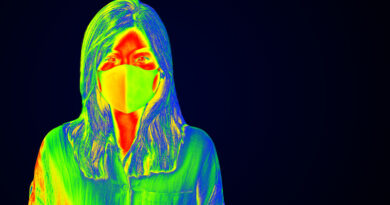The Role Of Biometrics In Neuromarketing
The introduction of neuroscience and cognitive science to marketing is known as neuromarketing. This form of market research can uncover customer needs and motivations, revealing preferences that traditional methods such as surveys and focus groups cannot. Biometrics is a new branch of neuromarketing. Biometrics employs various technologies and applications to better understand participants’ cognitive and emotional reactions. It studies reactions towards a product, advertisement, and brand.
Frequently, what people say does not fully correspond to their bodies’ physical reactions. A physiological response occurs before someone actually expresses what they are feeling. As a result, biometrics is a valuable tool in neuromarketing.
Here are some of the biometric tools used in neuromarketing and their functions:
Facial Coding
The Facial Action Coding System (FACS) is a classification system for human facial expressions. It allows practitioners to decode the underlying emotion that registers on the human face in response to stimuli, regardless of how brief the exposure is.
At any given time, facial coding can tell us whether the emotional charge is positive, negative, or neutral. It also sorts the expressions into six different categories.
Researchers can use effective facial coding to gauge consumers’ emotional reactions to advertisements, products, or brand perception. While facial coding has a lot of potential in marketing research, some people are still skeptical and consider it to be a bit too subjective and unreliable.
Eye-Tracking
Eye-tracking is a method of determining how interested someone is in what they see. It enables researchers to track where participants’ eyes travel as they view advertisements online or on
television. It also tracks where participants’ eyes travel as they view websites, prints, or any other form of media. Without relying on verbal responses, marketing researchers can determine
which elements are noticed first and most focused on most. Eye movement tracking is an excellent way to tell if a person is paying attention. On the other hand, the technique is unlikely to be helpful in understanding or predicting consumer recall and behavior.
Galvanic Skin Response (GSR)
The galvanic skin response is an excellent predictor of emotional arousal, indicating how strong the emotional charge is. However, it does not disclose emotional expression. Hence, we can’t tell whether the emotions are positive or negative, just like eye tracking. Neuromarketers should combine GSR with facial coding to accurately assess this critical dimension. The key benefits of GSR include its low cost, ease of measurement, and the fact that it is simple to use. It’s a less invasive device. Aside from the inability to measure expression, its main flaw is its lack of accuracy. There is a 1 to 5-second delay between the presentation of the stimulus and the phasic or skin conductance response (SCR).
Heart Rate Monitoring
Marketing experts can use an electrocardiograph (ECG) device to analyze heart rate, and it helps to understand physiological responses better. The idea is that these physiological responses, like other biometric measures, are thought to underpin emotions and may or may not be visible to people on a conscious level.
Anxiety, relief, and emotional fatigue reactions are all studied to give marketers a better understanding of how a respondent reacts to a set of variables. This allows researchers to see how advertisements affect the brain’s unconscious, customer behavior, and emotional regions.
Functional Magnetic Resonance Imaging(FMRI)
FMRI is a new type of biometric tool in neuromarketing that is gaining a lot of attention. The FMRI scanning technique aids in understanding how stimulation is analyzed in the brain, and it
also helps to know which research technique works best and why. For instance, FMRI shows the timing of when consumers see a price that can completely change how they buy. The neural data suggested that when the price came first, the decision question shifted from; do I like this? is this worth it? The researchers were able to predict which types of purchases would benefit from seeing the prices of products early on.
It’s possible that FMRI aids in determining which of several options has the most remarkable customer attraction during the product design phase. Similarly, FMRI data may assist in selecting the most effective messages in promotional campaigns. Such as movie trailers or other forms of advertising.
Moreso, FMRI can be used to better understand how marketing actions, whether consciously or subconsciously, alter people’s preferences and experiences. This type of market research, on the other hand, is relatively new, and it has some methodological and sampling issues.
Electroencephalography (EEG)
The purpose of this device is to track changes in brain wave activity. It is easily accessible and provides accurate and valid information on how the human brain works. Electroencephalography provides far more detailed diagnostic insights when compared to GSR or facial coding due to its superior temporal resolution. It also provides a more comprehensive set of metrics for measuring tiredness. It also measures attention, engagement, and workload, and researchers can tell which brain parts are active while respondents are performing a task or responding to stimuli.
Roles Of Biometrics In Neuromarketing
Biometrics helps marketing researchers to combine traditional research methodology, such as when researchers interview people about thoughts and feelings with non-verbal measures. Researchers can use biometrics to tap into consumers’ minds as they process and subconsciously respond to messaging and overall branding.
Biometrics captures unconscious or subconscious responses to marketing media. The researcher should constantly evaluate the benefits of using biometrics in neuromarketing against practical issues, such as access to equipment, expertise, intrusiveness to research participants, and cost.
Conclusion
Biometric tools are most effective when used in conjunction with one another to reveal different aspects of cognition, emotion, and behavior. Eye tracking, GSR, and facial expression, or eye-tracking and EEG, are two combinations to consider. These tools provide a clear, multi-faceted understanding of respondents’ advertising engagement. However, none of the techniques can dive deeply into the minds of the consumers.
To understand what drives emotions and determines consumers’ reactions, we still need qualitative and quantitative research but combining these methods with biometrics enables researchers to get a far more accurate response.











